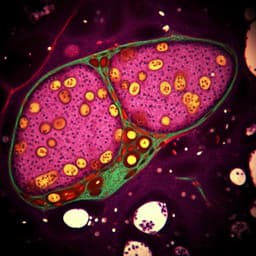
Biology
Thermogenic Brown Fat in Humans: Implications in Energy Homeostasis, Obesity and Metabolic Disorders
M. Saito and Y. Okamatsu-ogura
Explore the fascinating world of human brown adipose tissue (BAT) and its vital roles in energy homeostasis and metabolic disorders. This insightful review by Masayuki Saito and Yuko Okamatsu-Ogura examines the impact of aging and sex on BAT, as well as its connections to obesity and cardiovascular diseases. Discover how BAT regulates body temperature and energy expenditure!
Playback language: English
Related Publications
Explore these studies to deepen your understanding of the subject.







